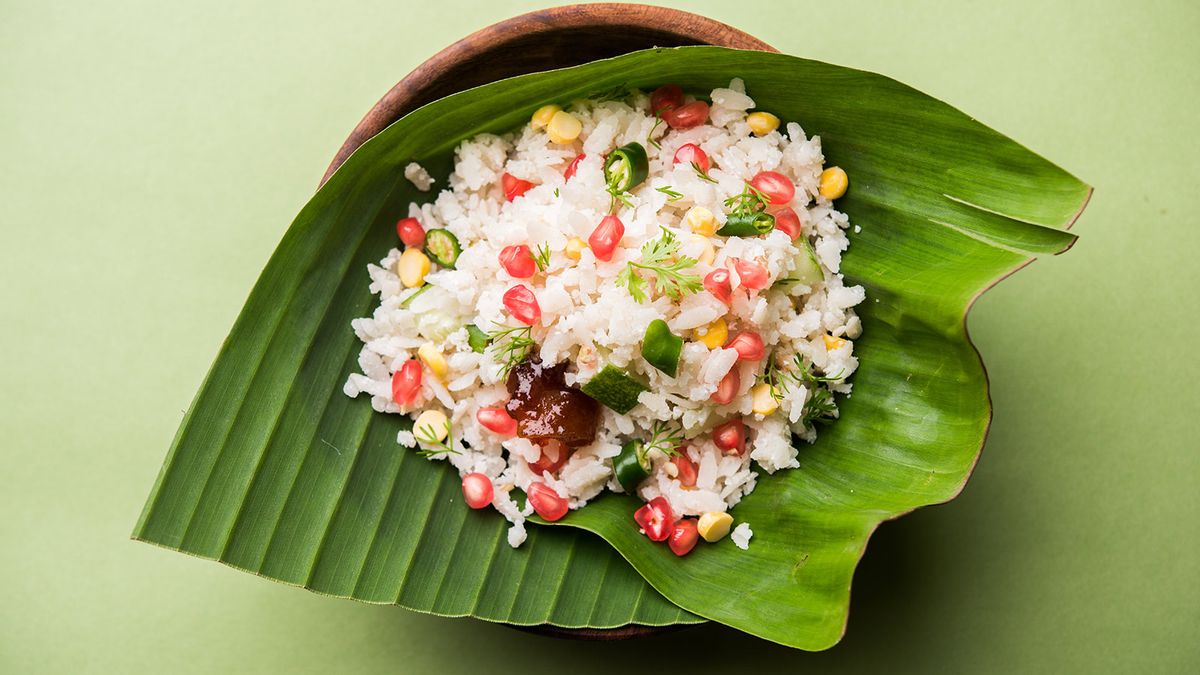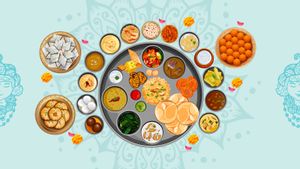The festival of Janmashtami marks the birth anniversary of Lord Krishna, the eighth avatar of Lord Vishnu. Like most Indian festivals, Janmashtami too is celebrated with much fervour—devotees observe fasts, sing bhajans, and offer tasty delicacies to Lord Krishna. These dishes offered to the deity are then distributed among devotees as prasad or naivedya. Here, we compile a list of the foods that are touted as Lord Krishna favourites and prepared for Janmashtami prasad.
1. Panchamrit
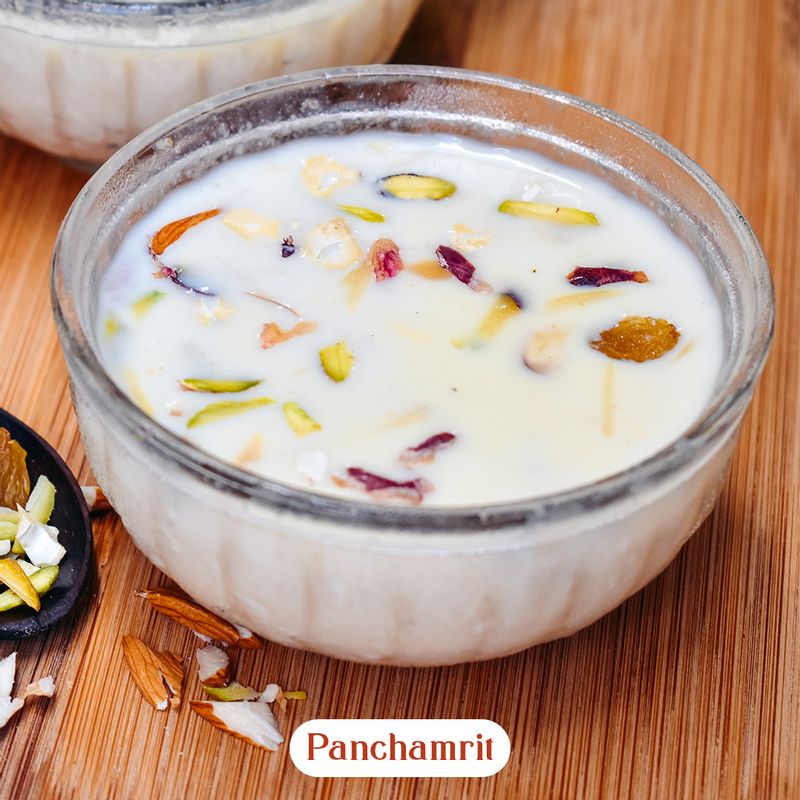
Panchamrit is a sweet concoction made of five (panch is five and amrit is the divine nectar of Gods in Sanskrit) ingredients—jaggery, milk, ghee, honey, and yoghurt. It is made up of one part sugar, honey, and curd; two parts ghee and seven to eight parts milk. This sweet treat is also known as the ‘drink of the gods’ and it is an essential food item for Hindus in pooja, during which idols or deities are bathed in panchamrit.
According to the Mahabharata, an ancient Indian epic, panchamrit emerged during the samudra mathan aka ksheera sagar mathan (churning of the ocean of milk). Shri Chamunda Swami, a spiritual guru and healer from New York, in his post on Instagram, mentions that each ingredient in this prasad has a symbolic meaning: “Milk represents purity and piousness. Curd represents prosperity and progeny. Jaggery represents sweetness and bliss. Ghee is meant for knowledge and victory.”
2. Makhan mishri
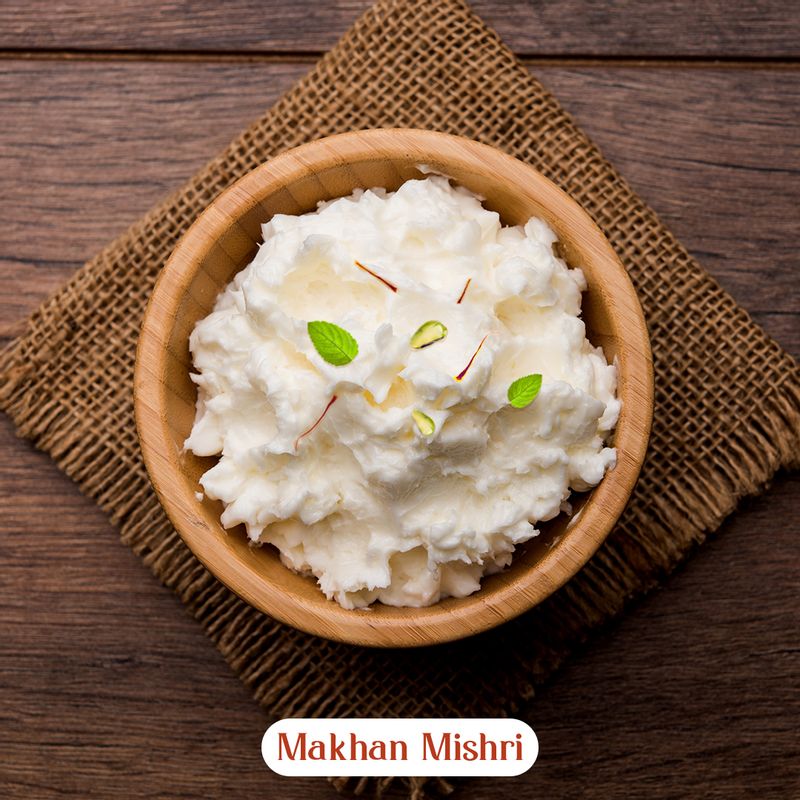
Another favourite of Lord Krishna is makhan mishri – freshly churned white butter mixed with rock sugar (mishri), finished off with a leaf of holy basil. Makhan mishri is also part of the chappan bhog (56 dishes offered to the deity on Janmashtami) and sometimes, is garnished with chopped pistachio, almond, and strands of saffron.
3. Dhaniya panjiri

Prepared as a Janmashtami prasad in parts of north India, especially Uttar Pradesh, Punjab, and Gujarat, dhaniya panjiri is a powdery sweet made using coriander powder, ghee, sugar/powder jaggery, dry fruits and herbal gum.
Dhaniya panjiri is a fast-friendly version of the north Indian sweet panjiri, that has whole wheat flour, sugar, ghee, dry fruits, and herbal gum. The recipe of both treats is almost the same, except dhaniya panjiri replaces whole wheat flour with coriander powder because consumption of grains is not allowed during the Krishna Janmashtami fast.
Dhaniya panjiri is often accompanied by panchamrit and sliced bananas for the Krishna Janmashtami pooja.
4. Mathura Peda

Another essential item in the chappan bhog, the Mathura peda is a milk-based Indian sweetmeat that originated in Mathura, Uttar Pradesh. Mawa (khoya), milk, sugar, ghee, and cardamom powder are cooked together to make the famous Mathura peda aka mawa peda, and it is offered to Lord Krishna as bhog on the occasion of Janmashtami.
Several devotees in north India, mainly Uttar Pradesh end their Janmashtami fast with Mathura peda first and then eat other foods. The sweetmeat has earned itself a geographical indication (GI) tag.
5. Gopalkala
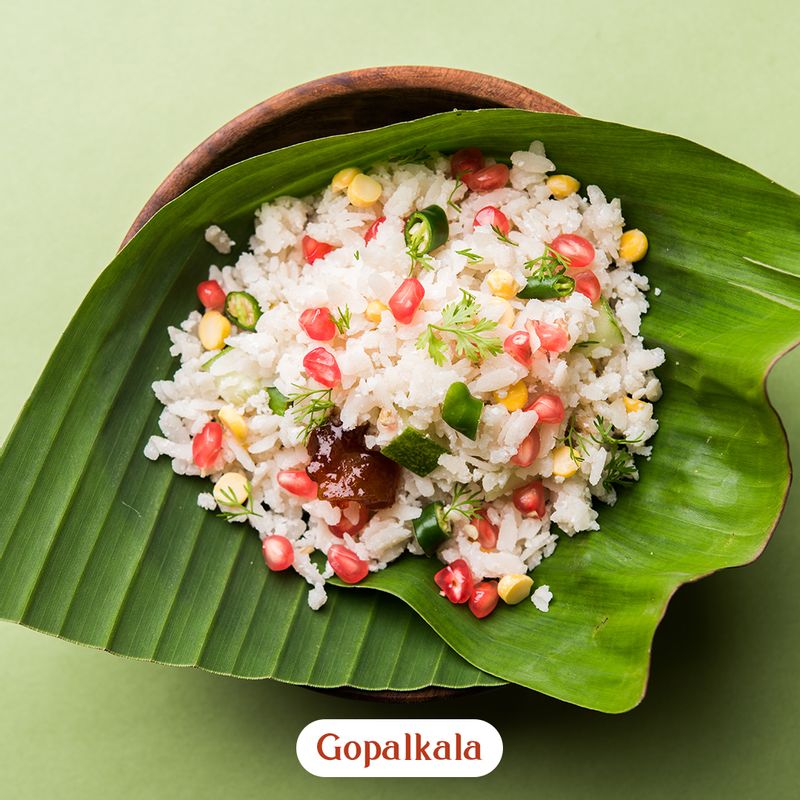
Another traditional delicacy prepared for the Janmashtami prasad is Gopalkala. A recipe unique to Maharashtra, it is a simple yet flavourful mixture of milk, yoghurt, cucumber, coconut, flattened rice, green chilli, pomegranate seeds, and salt.
This is the same delicacy that goes into the dahi handi, which is part of the dahi handi utsav – an event where girls and boys of the neighbourhood come together to make a human pyramid, and break an earthen pot filled with either white butter or gopalkala, tied at a certain height using a rope.
6. Barfi Churmu
On Janmashtami, Gujarat prepares a special dessert to please Lord Krishna. Barfi Churmu is considered one of the most important offerings on Janmashtami in different parts of Gujarat including Kathiyawad.

Surat-based food blogger Urvi Zanzmera showcases Kathiyawadi cuisine to the world through her blog My Food My Way. She tells us more about the Janmashtami-special Barfi Churmu. “This nutritional dessert is traditionally prepared for Shitla Satam and Janmashtami. It is made using wheat flour, sugar, ghee, and water,” says Zanzmera.
“Shitla Satam, a day before Janmashtami, is a day dedicated to Goddess Shitla in the Gujarati calendar. On this day, no fresh food is cooked in the house and all the cooking is done on Randhan Chhath, which is a day prior,” she explains. The food blogger also shares with us her recipe to make the perfect barfi churmu at home.
Barfi Churmu Recipe
Ingredients
For churmu
- 1 cup whole wheat flour, coarsely ground
- Ghee for deep frying
- 1/2 cup water (for kneading dough)
For sugar syrup
- 1/2 cup sugar
- 1/4 cup water (for sugar syrup)
For garnish
Dry fruits of your choice
Method
- In a big bowl, mix whole wheat flour with one tablespoon ghee. Mix the two by rubbing them between your hands, so that ghee is evenly mixed with the flour.
- Add some water and knead them into a stiff dough.
- Divide the dough into four equal portions and give them a cylindrical shape by pressing it between your fist and fingers. Since the dough is stiff, it will take some time to mould them.
- Once done, heat ghee on low flame in a kadhai and deep fry the dough balls until golden brown.
- When you remove them from the oil, place them on an oil-absorbing cooking paper.
- Once they cool down, grind the dough balls into a coarse powder and add ½ tablespoon ghee. Mix well.
- In the meantime, prepare the sugar syrup for the barfi churmu. Boil sugar and water in a pan on medium-high heat.
- Turn the heat to low and stir constantly.
- You need a single-strand consistency for the syrup so continue stirring the mixture until it reaches the required consistency.
- Add the churmu to the syrup and mix well for about a minute.
- Spread the churmu on a greased plate while it is hot and garnish it with chopped nuts of your choice.
- Cut it into square pieces and serve.
While this is a basic barfi churmu recipe, if you want to make the dessert richer, add some elaichi powder, nutmeg powder, desiccated coconut, and poppy seeds to the mixture. It will not only lend a more complex flavour profile to the barfi churmu, but also add a variety of textures.


